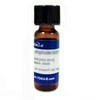Ansamitocins, a new group of ansamycin antibiotics with potent antitumor activity, were first reported in the journal Nature in 1977 by researchers from Takeda Chemical Industries. Anisomitocin P3 is the 3-O-methylpropanoyl derivative of maytansinol produced by bacteria rather than maytansinoid-producing plants. Ansamitocin P3 inhibits the growth of several eukaryotic microorganisms but has no activity against prokaryotic microorganisms. The acyl moieties at the C-3 position of ansamitocins are essential for their antifungal activities. Ansamitocin P3 targets cell division protein FtsZ, the analogue of β-tubulin in bacteria.
| Molecular Formula | C32H43ClN2O9 |
| References |
Higashide E et al (1977) Ansamitocin, a group of novel maytansinoid antibiotics with antitumour properties from Nocardia. Nature 270:721 Ootsu K et al (1980) Effects of new antimitotic antibiotics, ansamitocins, on the growth of murine tumors in vivo and on the assembly of microtubules in vitro. Cancer Res. 40:1707 Tanida S et al (1980) Ansamitocins, maytansinoid antitumor antibiotics: Producing organism, fermentation, and antimicrobial activities. J. Antibiot. 33:192 |


